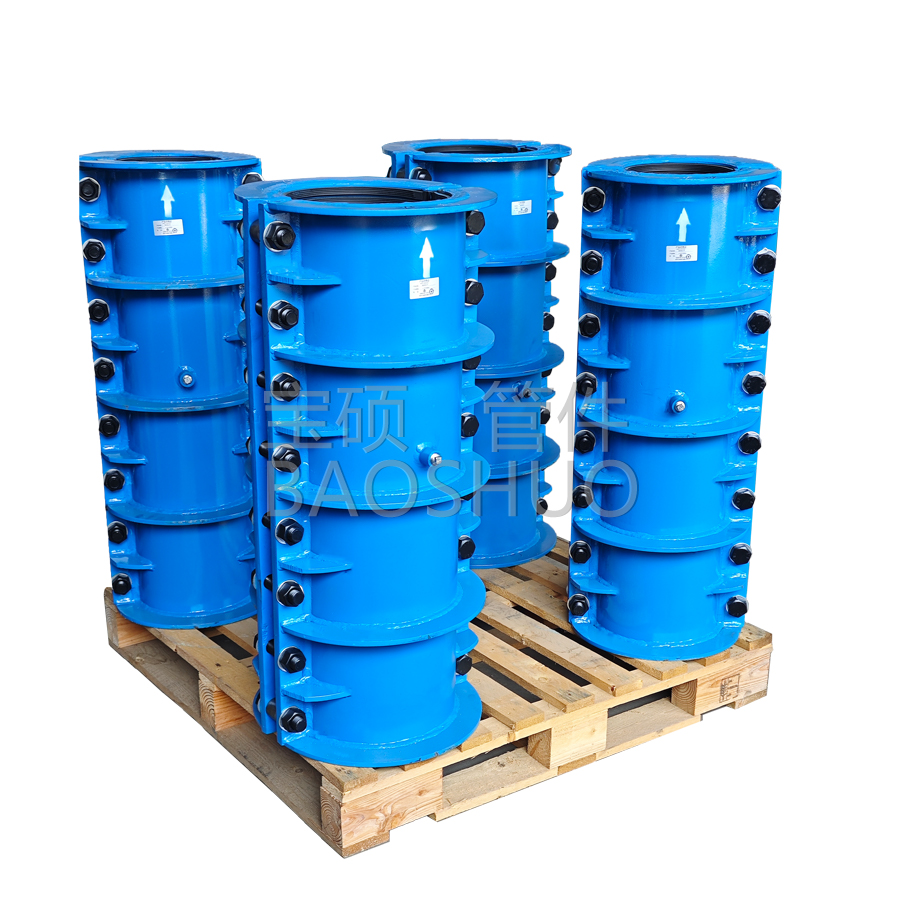What is the highest pressure rating of PE pipe? What should I do if the high-pressure pipe leaks? What are the advantages of using high-pressure repair clamps?
What is the highest pressure rating of PE pipe? What should I do if the high-pressure pipe leaks? What are the advantages of using high-pressure repair clamps?
Understanding the maximum pressure rating of PE pipe, methods for handling high-pressure pipe leaks, and the advantages of high-pressure repair kits is crucial for the safe operation of pipeline systems. I'll help you sort this information out.
🧿1 Maximum Pressure Rating of PE Pipe
The maximum allowable working pressure of PE pipe is not a fixed value; it depends primarily on the material grade, standard dimension ratio (SDR), and operating temperature.
1.1 Material Grade and SDR
PE pipe material grades are typically classified based on their minimum required strength (MRS) at 20°C, 50 years of service life, and 97.5% confidence level:
PE100: With an MRS of 10.0 MPa, this is a commonly used high-density polyethylene pipe with a high pressure-bearing capacity.
PE80: With an MRS of 8.0 MPa, PE63 and lower grades have been largely phased out.
The "standard dimension ratio" (SDR) is the ratio of the pipe's nominal outer diameter to its nominal wall thickness. A smaller SDR value indicates a thicker wall and generally higher pressure-bearing capacity. For example, the wall thickness of an SDR11 pipe is thicker than that of an SDR17 pipe.
1.2 Actual Working Pressure Limits
The reference values for the maximum allowable working pressures of PE pipes of different material grades and SDRs for natural gas transportation (temperature ≤ 20°C) are as follows:
|
Material Grade |
SDR Value |
Maximum Allowable Working Pressure |
|
PE100 |
SDR11 |
0.7MPa |
|
PE100 |
SDR17 |
0.4MPa |
|
PE80 |
SDR11 |
0.5MPa |
|
PE80 |
SDR17 |
0.3MPa |
▶️ Important Notes:
Temperature Effect: When the monthly average maximum temperature of the pipeline operating environment exceeds 20°C, the maximum allowable working pressures in the table above must be multiplied by a reduction factor. For example, at 30°C, the reduction factor is 0.87, and at 40°C, the reduction factor is 0.74.
Standard Specifications: According to the "Urban Gas Design Code" (GB50028), polyethylene (PE) pipes are generally only suitable for medium- and low-pressure gas systems (P ≤ 0.4 MPa) and are strictly prohibited for use in piping systems with sub-high pressure ratings or higher. Although the theoretical pressure rating for PE100 SDR11 is up to 0.7 MPa, for safety and long-term performance considerations, compliance with the above regulations is mandatory.
Water Supply Pipes: The pressure range for PE water supply pipes is 0.32 MPa to 1.6 MPa, with the specific pressure rating also depending on the material grade and SDR value.
🧿2. What to Do If a PE High-Pressure Pipe Leaks
A PE high-pressure pipe leak is an emergency and must be handled scientifically and quickly, with safety first.
Common Emergency Repair Methods
After excavating the work pit and confirming that the on-site gas concentration is within a safe range (below 20% of the lower explosion limit), a repair method can be selected based on the extent of the pipeline damage:
Repair Method Applicable Scenarios Key Steps and Features
Electrofusion Sleeve Repair For large pipe damage requiring section removal: Remove the damaged section and weld the pipe at both ends using an electric fusion sleeve.
Tube Gripper (Flattening Device) Repair For severe damage to small-diameter (≤110mm) PE pipe: Use a hydraulic clamp to flatten the pipe at both ends of the damage point to isolate the gas supply, then perform a pipe replacement.
Saddle Repair For small holes, scratches, or punctures: Clean and scrape away the oxide layer, then wrap the leak with a saddle fitting or repair piece and perform an electrofusion weld.
Mechanical Repair Joint For rapid repair of medium- and large-diameter PE pipes: A split sleeve structure (often with a sealing ring) is fastened with bolts for a quick mechanical connection.
▶️ Repair Precautions:
Welding Safety: Whether performing electric or hot fusion, ensure the weld surface is clean, dry, and stress-free, and strictly control welding parameters.
Working Under Pressure: When working under pressure, maintain proper internal pressure to prevent expansion that could affect the quality of the hot fusion.
Quality Inspection: After the repair is complete, a rigorous leak check (such as a soapy water leak test) must be conducted as required. Only after confirmation can the gas supply be restored.
🧿3. Advantages of Using High-Pressure Emergency Repair Parts
Using specialized emergency repair parts to repair leaks in PE high-pressure pipes offers significant advantages:
Efficient and Fast, Shortening Outage Time: Specialized emergency repair parts, such as mechanical emergency connectors or pipe grabbers, are designed for quick installation. This is crucial for minimizing outage time and impact on customers.
Safe, Reliable, and Sealing: Professional emergency repair parts typically feature a split-piece structure and high-quality sealing elements, providing uniform tightening force and excellent sealing performance to prevent secondary leaks. Easy to operate and adaptable: Many repair kits offer various modes of operation, such as manual or hydraulic, to accommodate varying site conditions and pipe diameters. Mechanical joints typically have some ability to correct for pipe out-of-roundness.
Weld-free, pressurized operation: Tools like pipe grabbers allow pressure reduction without shutting off the gas supply, enabling continuous repairs and avoiding the risks and significant costs associated with traditional welding and safety shutdowns.
Economical and practical, with high overall efficiency: While individual repair kits may cost more, they significantly shorten repair time, reduce labor, and minimize emissions, resulting in better overall economics.
🧿4. Important Notices
Solving PE high-pressure pipe leaks is a specialized and dangerous task. Always remember the following:
Safety First: Always prioritize personal safety and strictly follow emergency response plans.
Professional Operation: Repairs must be performed by professionally trained and qualified personnel using appropriate equipment and tools.
Comply with regulations: All operations must comply with relevant safety regulations, technical standards, and company procedures.











